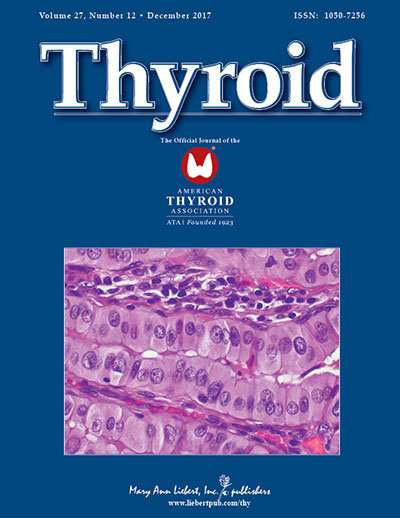New findings clarify thyroid's role in mammalian seasonal changes

Researchers now have a better understanding of the role that thyroid hormones, the tissues that produce them, and the biochemical pathways on which they act have in driving seasonal reproduction in some mammals, and how this new information may help explain seasonal changes in metabolism and mood that affect humans. The review article entitled "Seasonal Rhythms: The Role of Thyrotropin and Thyroid Hormones" is part of a special section on Japanese Research led by Guest Editor Yoshiharu Murata, Nagoya University, Japan, in the January 2018 issue of Thyroid.
Coauthors Tomoya Nakayama and Takashi Yoshimura, Nagoya University and National Institute for Basic Biology, Okazaki, Japan explore the significance and implications of the data derived from the most recent genomic and molecular studies of animals that breed seasonally, such as the Japanese quail. The researchers examine the relationship between length of daylight, the secretion of thyrotropin (TSH) from the pituitary gland, and gonadal growth in animals. They discuss the value of comparative studies in various mammals, in which molecules such as TSH have been conserved across evolution. These studies may help shed light on the mechanisms underlying seasonal depression-like symptoms and weight gain in humans.
"Through a series of very elegant studies, Dr. Yoshimura's group has discovered that T3 produced in the mediobasal hypothalamus (MBH) regulates gonadotropin-releasing hormone (GnRH) secretion in a seasonal fashion," says Peter A. Kopp, MD, Editor-in-Chief of Thyroid and Professor of Medicine, Division of Endocrinology, Metabolism, and Molecular Medicine, Northwestern University Feinberg School of Medicine, Chicago, IL. "The increase in triiodothyronine (T3) is dependent on differential expression and activity of deiodinase type 2. Most interesting and surprising is the fact that the expression of deiodinase type 2 is regulated by TSH secreted from the pars tuberalis (rather than the pars distalis) of the anterior lobe of the pituitary gland. TSH secreted from this source differs in its glycosylation pattern and it does not stimulate the thyroidal TSH receptor. These studies define this alternative form of TSH as a springtime hormone and provide fundamental insights into the seasonal regulation of reproduction."
More information: Tomoya Nakayama et al, Seasonal Rhythms: The Role of Thyrotropin and Thyroid Hormones, Thyroid (2017). DOI: 10.1089/thy.2017.0186
Provided by Mary Ann Liebert, Inc




















